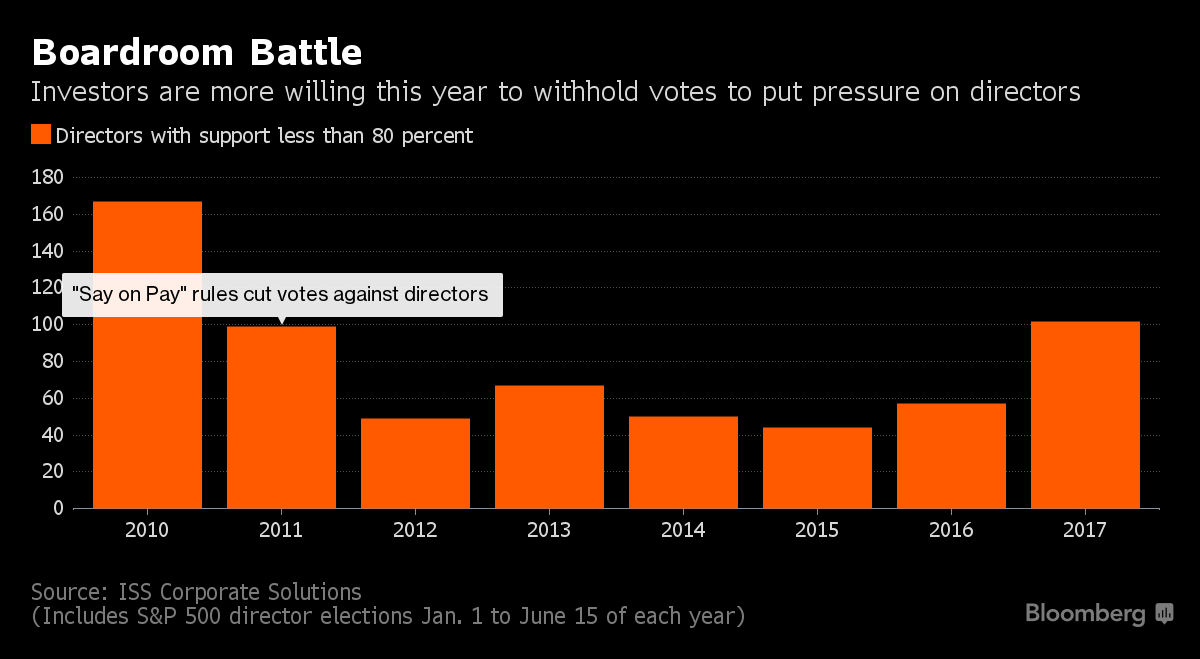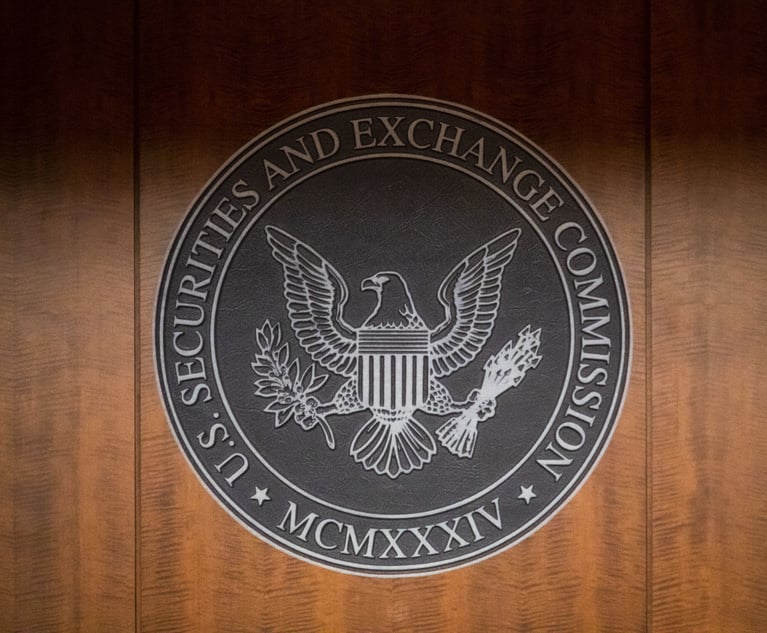Big investors are losing patience with unresponsive corporatedirectors, and they're showing it with their votes.
|Shareholders have withheld 20% or more of their votes for 102directors at S&P 500 companies so far this year, the most inseven years, according to ISS Corporate Solutions, aconsulting firm specializing in corporate governance. While largelysymbolic, the votes at companies such as Wells Fargo & Co. andExxon Mobil Corp. are recognized as signals of displeasure and putpressure on boards to engage.
|“Institutional investors are becoming more actively involved incommunicating displeasure through their votes,” said PeterKimball, head of advisory and client services at theconsulting firm, a unit of Institutional Shareholder Services.“Voting against directors at large-cap S&P 500 companies is away for an institution to send a signal to other, smaller companiesabout the actions that they don't like. That feedback tricklesdown.”
|While the Trump administration moves to reduce regulatorypressure on companies, big institutional investors are moving inthe opposite direction. State Street Global Advisers and BlackRockInc., for example, are increasingly taking an activist approach,calling for changes in diversity and corporate responsibility.
|“Part of this is really the shift in investors to focus more onboard quality,” said Rakhi Kumar, who leads environmental, socialand governance investment strategy at State Street. “Boardresponsiveness is a key reason why shareholders will hold directorsresponsible. If engagement isn't working and boards aren't beingresponsive to our feedback, then we take action.”
|State Street voted against 731 directors in 2016 and expects asimilar number this year, after rejecting 538 in 2015, Kumar said.No longer are investors just “checking a box” to support directors,she said. State Street is encouraging companies to refresh theirboards to get new and more diverse members.
|The bank overhauled its investment strategy in 2013 to becomemore activist. This year, State Street received a wave of positivepublicity after it unveiled the “Fearless Girl” statue on WallStreet. In conjunction with the art project, the bank also issued afresh call on 3,500 companies to add more women to their boards,particularly those with no female members.
Pay Say
Wells Fargo's board faced pressure from investors because of itsfailure to prevent a scandal that led to the bank being fined$185 million by regulators in September for opening retail bankaccounts without customer approval. Exxon Mobil took heat over itsstance on global warming and engagement with investors. Theentire board at Wells Fargo received less than 80% support thisyear, including four with less than 60% support. At Exxon Mobil,two directors received less than 80% support: lead director StevenReinemund and Kenneth Frazier, who is chairman of board affairscommittee.
|Since 2011, companies have been required to hold a nonbindingvote at least once every three years, usually described as the “sayon pay” review, in which investors can demonstrate their support,or lack thereof, for a company's compensation practices. Prior tothat year, investors would often vote against directors on thecompensation committee to show their displeasure.
|A vote of less than 80% is meaningful because the median levelof support for all directors is still about 99%, according to ISSdata. The higher number of directors receiving low support thisyear is significant because “no” votes dropped off after the rulechange in 2011, Kimball said.
|“Investors are getting a little bit more impatient in somecases, and the Wells Fargo situation was a bit of a wake-up call,”said Ken Bertsch, executive director of the Council ofInstitutional Investors, a Washington-based nonprofit thatadvocates for shareholders' rights. “They are trying to be a littlemore forceful.”
|
Bloomberg News
|Copyright 2018 Bloomberg. All rightsreserved. This material may not be published, broadcast, rewritten,or redistributed.
Complete your profile to continue reading and get FREE access to Treasury & Risk, part of your ALM digital membership.
Your access to unlimited Treasury & Risk content isn’t changing.
Once you are an ALM digital member, you’ll receive:
- Critical Treasury & Risk information including in-depth analysis of treasury and finance best practices, case studies with corporate innovators, informative newsletters, educational webcasts and videos, and resources from industry leaders.
- Exclusive discounts on ALM and Treasury & Risk events.
- Access to other award-winning ALM websites including PropertyCasualty360.com and Law.com.
*May exclude premium content
Already have an account? Sign In
© 2024 ALM Global, LLC, All Rights Reserved. Request academic re-use from www.copyright.com. All other uses, submit a request to [email protected]. For more information visit Asset & Logo Licensing.







